Think of your title tag as the headline. Then, your meta description is the short, compelling pitch right underneath it on Google. It’s that crucial snippet of text that convinces someone your page is worth their time.
Get it right, and you can see your click-through rate jump by as much as 30%. That extra engagement does more than bring in visitors—it sends a powerful message to Google that people value your content, which can help your rankings over time.
This entire process is what we refer to as meta description optimization. In today’s crowded search results, especially on mobile devices, where screen space is limited, mastering this skill is no longer optional. At SEO Services BD, we’ve seen this strategy deliver incredible results for all kinds of businesses. In this guide, we’re sharing the exact playbook we use to turn those simple descriptions into powerful click-magnets.
Getting to Know the Meta Description
Before we delve into the technical details, let’s ensure we’re all on the same page regarding what a meta description actually is. Getting this fundamental part right is the first step to making it work for you.
So, What Is It, Really?
Behind the scenes, a meta description is just a small piece of HTML code on your website. But its real job happens out in the open, on the Google search results page. It’s the summary that appears directly below your main headline.
The most important thing to know is that a meta description doesn’t directly boost your rankings. Instead, its power comes from convincing a real person that your page is worth their time. When they click, it sends a positive signal to Google that you’re an excellent match for their search.
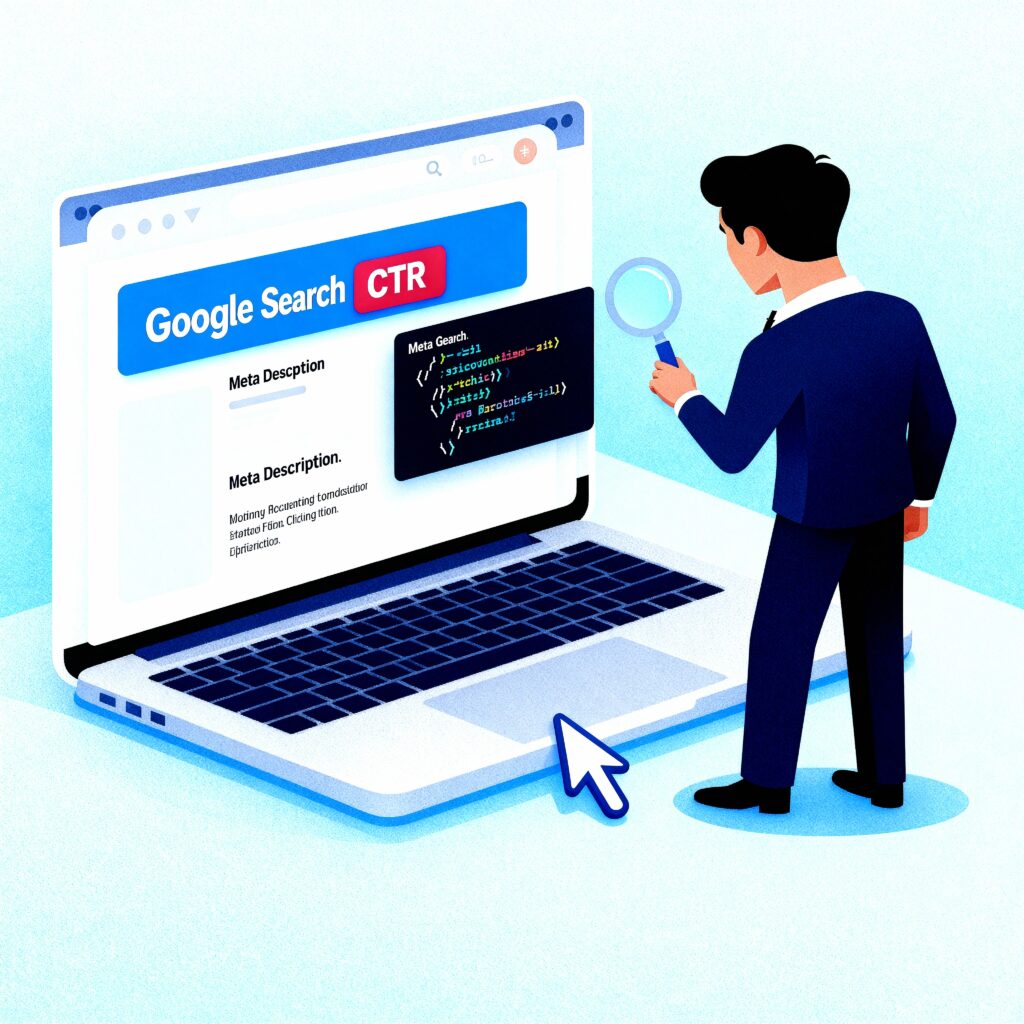
How Is It Different from a Title or H1?
It’s easy to get these mixed up, but each plays a very different role.
Think of it like a book:
- The Title Tag is the eye-catching cover that grabs your attention.
- The Meta Description is the summary on the back that convinces you to open it.
- The H1 Tag is the title of the first chapter, welcoming you once you’re inside.
Where You’ll Actually See It
Your meta description shows up in a few key places:
- Google Search Results: This is its main stage.
- Social Media: When someone shares your link, platforms like Facebook and LinkedIn often use it as the summary.
- Mobile Search: On a small screen, a sharp, concise description is everything.
A Pro Tip for the Bangladeshi Market
Now, for businesses targeting a market like Bangladesh, things get even more interesting. People often search using a combination of English and Bengali, and Google is smart enough to recognize this. It might even show a different description to match a user’s specific query.
This is precisely why a one-size-fits-all approach doesn’t work, and it’s a core part of our On-Page SEO Services—making sure your message hits home for every part of your audience. For example, a great meta for a local business might look like this:
“Expert SEO Services in Bangladesh to Boost Your Rankings & Traffic. Get a Free Consultation Today!”
How Meta Descriptions Really Impact Your SEO
How does a short snippet of text actually make a difference in your search rankings? It’s not a direct command to Google, but it’s a powerful nudge that works through innovative science and user trust.
It All Starts with the Click
Your meta description’s main job is to earn the click. When more people choose your page from the search results, it sends a powerful message to Google that your content is an excellent answer to their query. In fact, a well-written description can boost your click-through rate by 15-30%. That extra engagement does more than bring in visitors—it signals quality, which can help your rankings over time. This is a game-changer in our mobile-first world, where every tap counts.
But What About Google’s Rewrites?
It’s a fair question, especially when you hear that Google rewrites them over 70% of the time. Here’s the secret: Google tends to rewrite bad descriptions—the ones that are generic, stuffed with keywords, or don’t match the page’s content.
Think of your meta description as your preferred script. When you write a great one, you’re giving Google a high-quality option to use. If you leave it blank, you’re letting it improvise—and the results usually aren’t pretty. Writing one is your best shot at controlling the message.
Writing for Your New AI Audience
These days, your audience isn’t just people. AI tools like ChatGPT and Gemini are constantly scanning the web, and your meta description is the perfect, bite-sized summary for them. They look past simple keywords to understand what your page is really about. A clear, natural description helps them get your message right, putting your content in front of even more people.
How to Write a Great Meta Description: A Step-by-Step Guide
Writing a meta description that actually works isn’t about guesswork. It’s a simple, repeatable process. Follow these steps, and you’ll be able to craft compelling snippets that get real results.
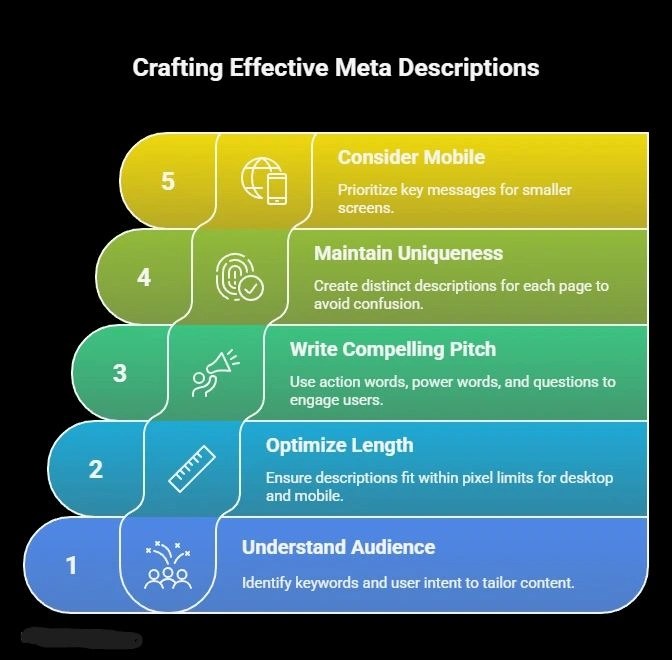
Step 1: Figure Out What People Are Looking For
Before you write anything, take a moment to understand your audience. What keywords are they using, and what do they hope to find? Once you know your main keyword, try to place it naturally near the beginning of your description. This instantly tells the reader they’re in the right place.
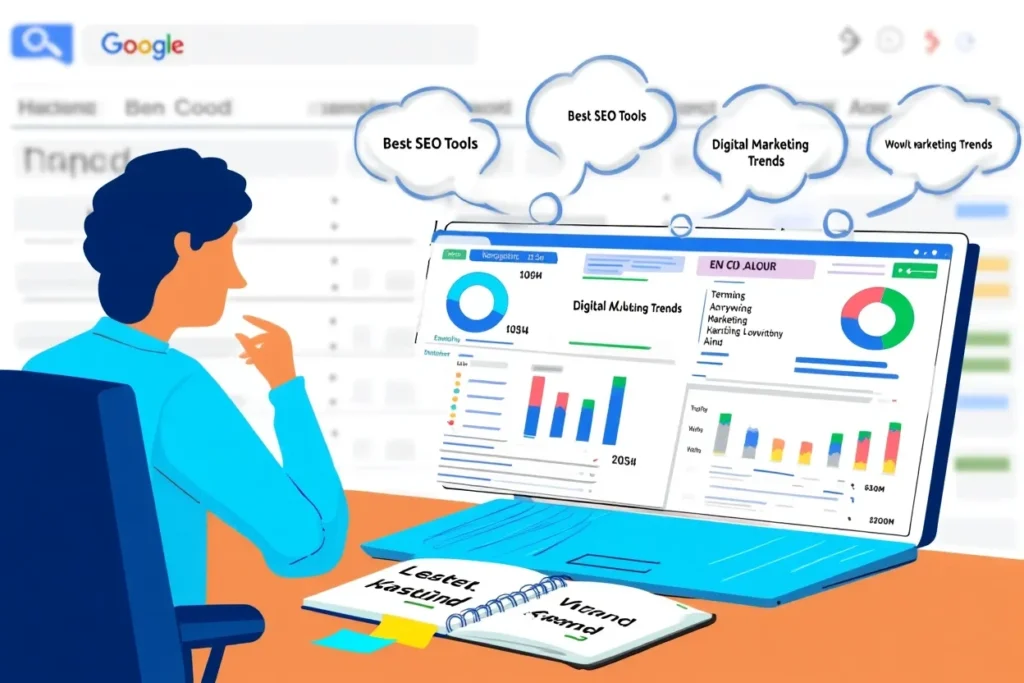
Step 2: Get the Length Just Right

You’ve probably heard the “160-character” rule, but it’s more accurate to think in terms of space. Google gives you about 920 pixels on a desktop and a tighter 680 pixels on mobile. Since letters have different widths, a pixel counter is your best friend. Always use a SERP preview tool to make sure your message doesn’t get cut off.
Step 3: Write Something People Actually Want to Click
Now for the fun part: writing a pitch that works.
- Start with an action word. Instead of “This page is about…”, try “Learn how…” or “Discover the best…”
- Tell them what to do next. A simple “Read our guide,” “Shop now,” or “Get a free quote” makes a huge difference.
- Use power words and numbers. Phrases like “Ultimate Guide,” “Proven Steps,” or “10 Easy Tips” grab attention and set clear expectations.
- Ask a question. Spark their curiosity with a question you know your content can answer, like “Tired of low traffic? Here’s how to fix it.”
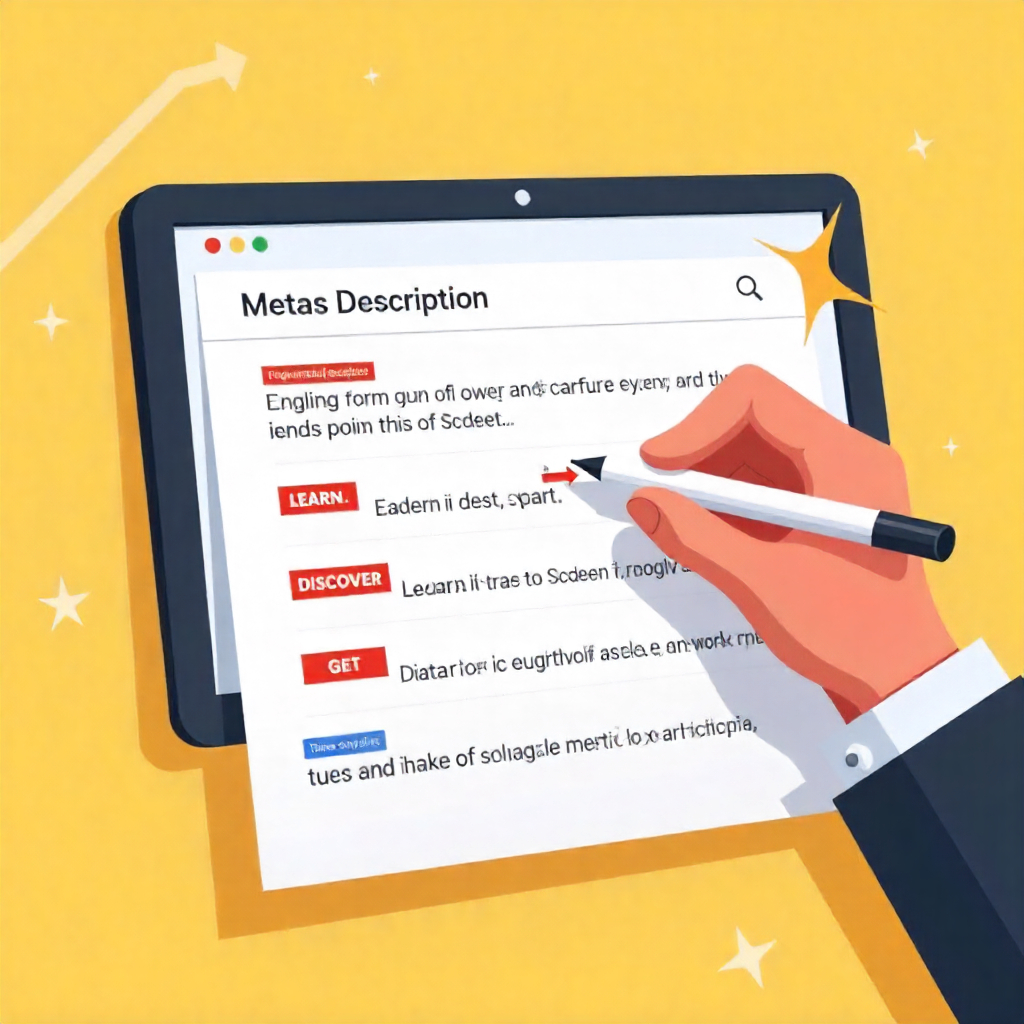
Step 4: Keep It Unique and Honest
This one’s a golden rule: every page needs its own unique meta description. When you use the same one everywhere, you confuse Google.
And just as important, make sure your description is an honest reflection of what’s on the page. A misleading description will only frustrate visitors and lead to a high bounce rate. This kind of content alignment is a core part of our On-Page SEO Services, where we make sure every element works together. For example, a great meta for a service page might be:
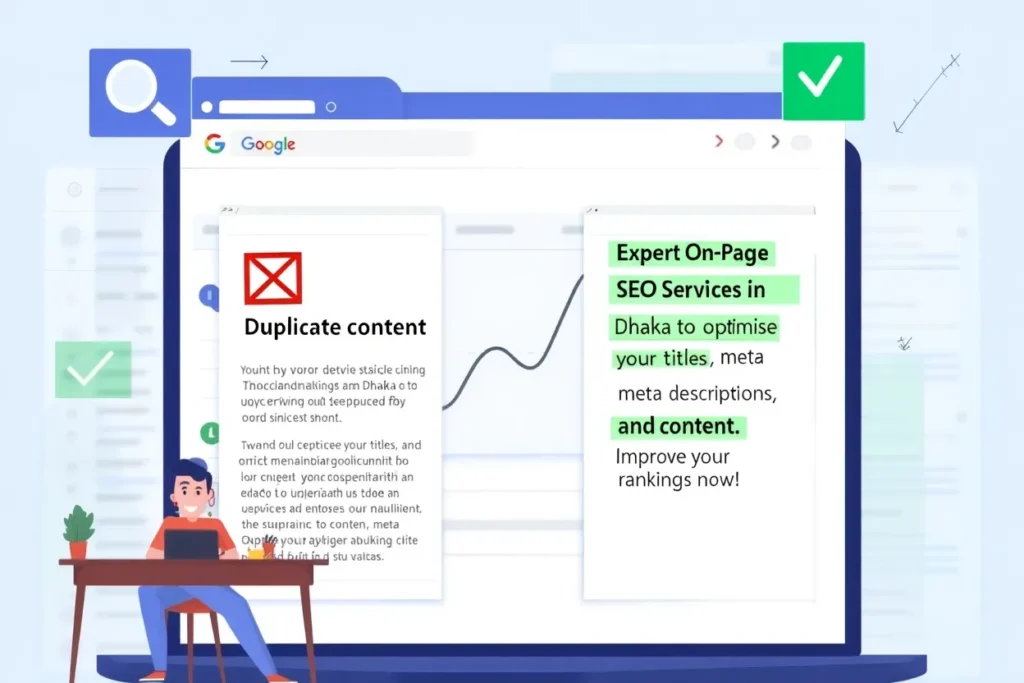
“Expert On-Page SEO Services in Dhaka to optimize your titles, meta descriptions, and content. Improve your rankings now!”
Step 5: Think Mobile and Global
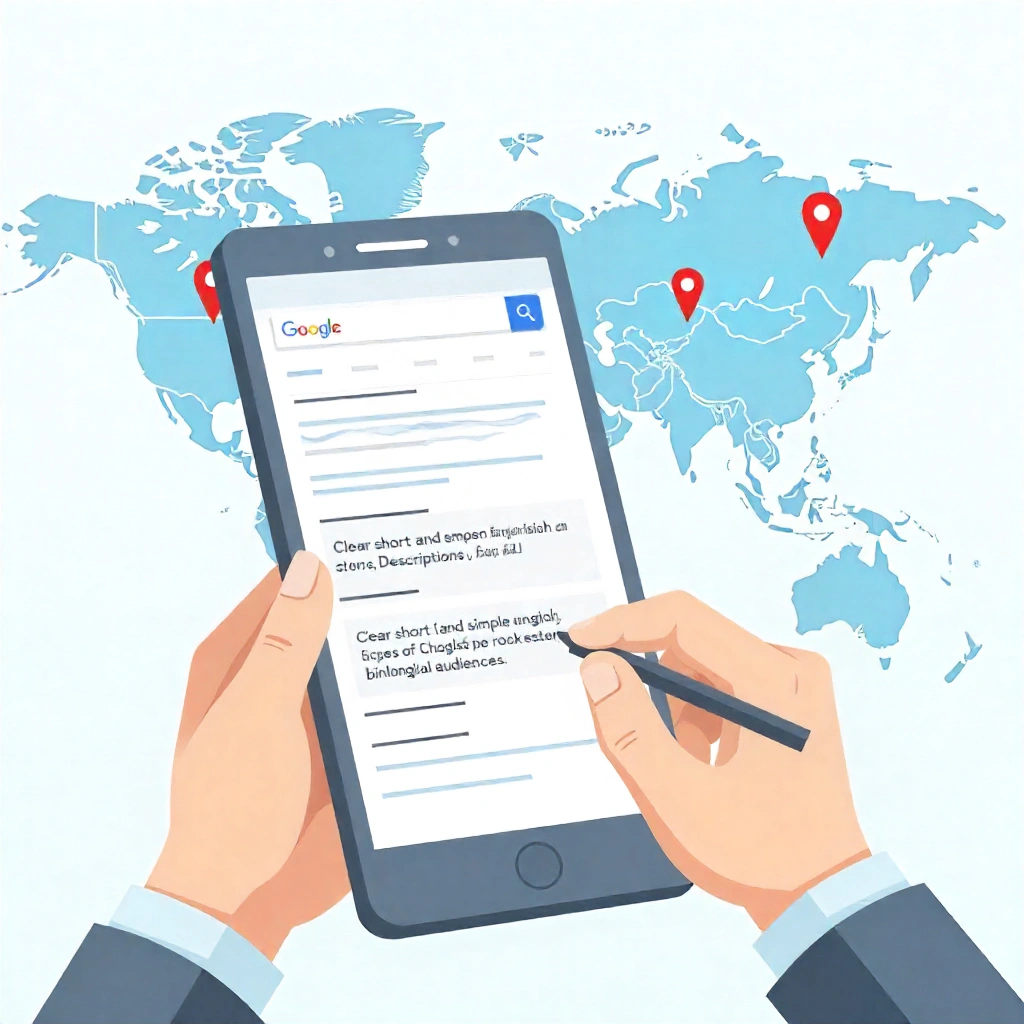
In our mobile-first world, your descriptions need to be short and to the point. With less space on the screen, your most important message has to come first.
And if you’re targeting a bilingual audience, like in Bangladesh, it’s smart to write your main description in clear, simple English. That way, even if Google translates it, your core message won’t get lost.
Common Meta Description Mistakes (and How to Fix Them)
Knowing what not to do is just as important as knowing what to do. Even with the best intentions, a few common mistakes can completely undermine your efforts and hurt your click-through rate. Here are the biggest errors we see and how you can easily avoid them.
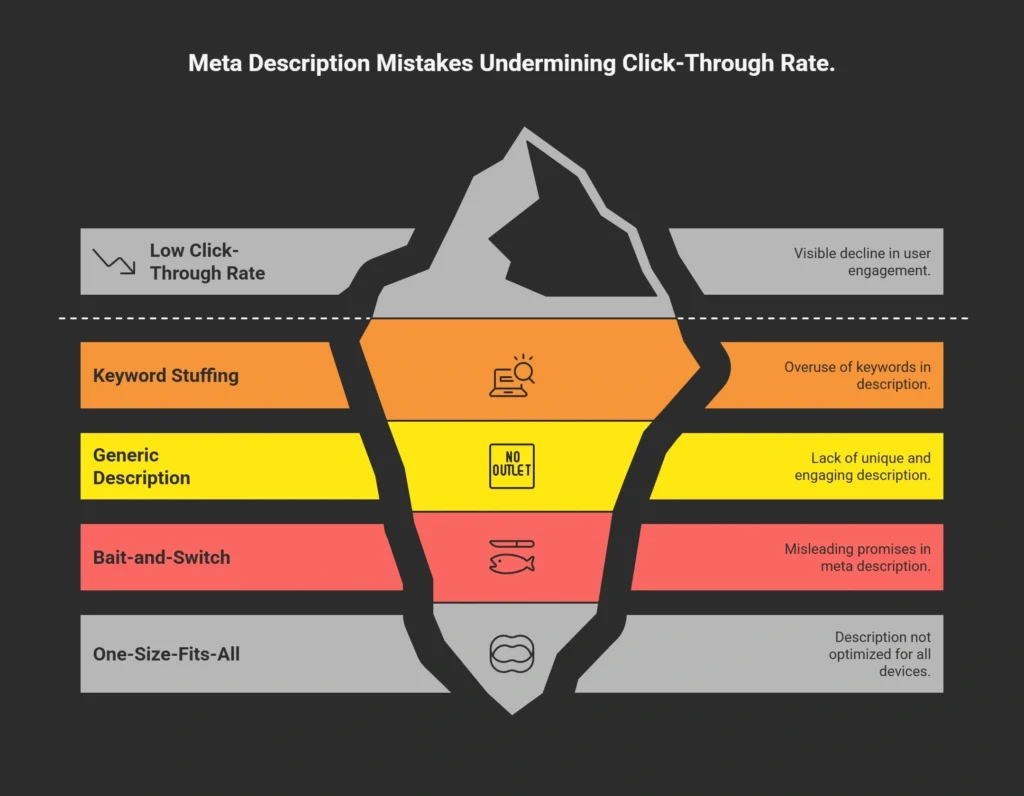
1. The Keyword-Stuffed Mess
This is the old-school habit of jamming a description full of keywords. It sounds robotic, drives users away, and modern AI tools can spot it from a mile off.
- The Fix: Write for people. Use your main keyword once, naturally.
- For example:
- Instead of: “Best SEO services, SEO agency Dhaka, affordable SEO, SEO experts BD.”
- Try: “Get the best SEO services in Dhaka. Our expert agency offers affordable plans to boost your rankings and grow your business.”
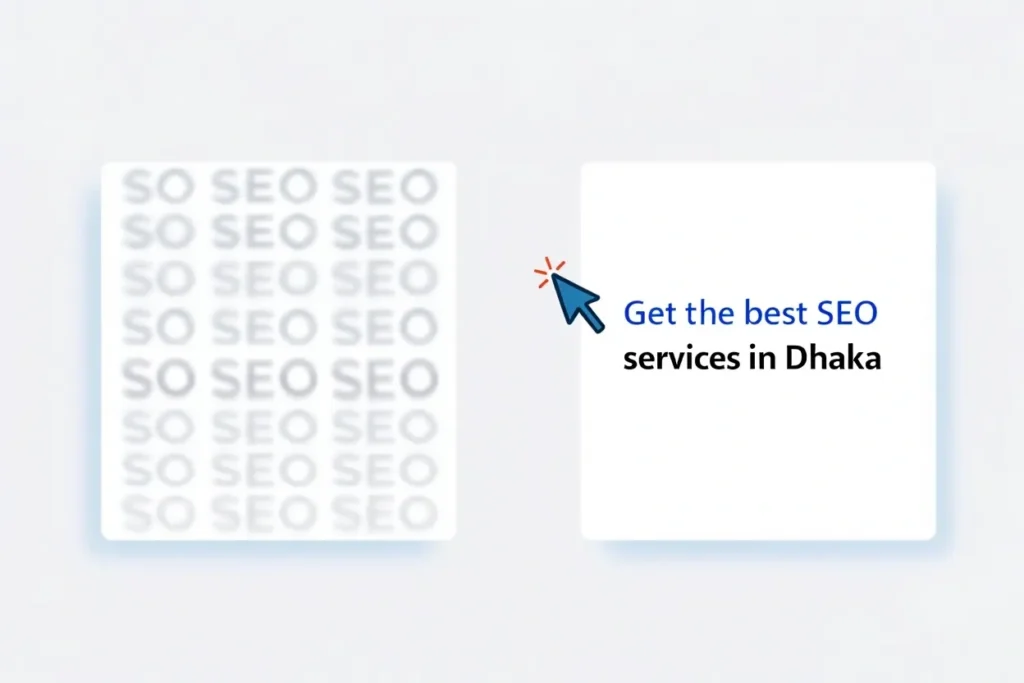
2. The Generic or Missing Description
A blank or auto-generated description, such as “This is a blog post,” is a huge missed opportunity. It’s the digital equivalent of a blank sign in a shop window.

- The Fix: Take a few minutes to craft a unique, engaging description for each significant page.
- For example:
- Instead of: “Homepage”
- Try: “SEO Services BD helps businesses grow with proven SEO strategies. Discover our services and get a free consultation today.”
3. The Bait-and-Switch
If your description makes a promise that your page can’t keep, people will click away instantly. That high bounce rate tells Google your page isn’t a good match, which often leads them to rewrite your description for you.
The Fix: Be honest. Make sure your description accurately previews the great content on your page.

4. The “One-Size-Fits-All” Flaw
A description that’s too long will get awkwardly cut off on a phone, hiding your main point. Likewise, using complicated jargon might not resonate with a global audience or someone searching in a different language.

The Fix: Keep it concise and put your most important message first. Use simple, clear language that everyone can understand, regardless of their location.
The Future of Meta Description Optimization in an AI-Driven World
Search is changing rapidly as AI takes the wheel, but meta description optimization remains a smart way to cut through the clutter. Features like Google’s Overviews sift through results to deliver instant answers, so adapting your snippets now sets you up for the long haul. Through our work at SEO Services BD, we’ve watched how forward-thinking tweaks keep .bd pages in the mix alongside international players.
Writing for AI Overviews and Voice Search
The most significant change you’re seeing is Google’s AI Overviews—those instant summaries at the top of the search results. These AI systems are looking for quick, direct answers. When your meta description is framed like a mini Q&A, you’re essentially handing them the perfect snippet to use.
The same goes for voice search. A conversational description is far more likely to be read aloud as the answer.
How AI Actually Reads Your Descriptions
And it’s not just about keywords anymore. AI tools are getting smarter, learning to spot genuine expertise and authority (what SEOs call E-E-A-T). A transparent and honest description signals that your content is trustworthy, making it a more reliable source for them to draw from.
Why the Fundamentals Will Always Win
But here’s the thing: even with all this new technology, the core mission hasn’t changed. Search is still about connecting a person’s question to a great answer.
That’s why the fundamentals will always win. A unique, compelling, and honest description that focuses on the user will always be your most powerful tool, no matter what changes come next.
FAQ
Is there a different character limit for mobile vs desktop?
Traditionally, meta description length has maxed out at 155 characters for desktop and 120 characters for mobile… if a majority of your traffic is mobile, your meta description length should conform to that standard. under 160 characters for desktop and 120 for mobile for optimal user engagement.
Should I front-load important information in my meta descriptions?
Are you keeping your Meta Descriptions to a max of 120 characters or do you front load the first 120 characters and put the less important copy at the end, to a max of 160 characters? Include the most important content in the front part of your description to ensure it stays visible—just like this example.
Why does Google keep changing my meta descriptions?
The third reason is because Google is trying to match the search query with the content but the match isn’t in the meta description. Now the explanation of what triggers Google’s algorithm to rewrite the meta description tag: “The other thing there is that we need to be able to, I guess, trust the meta description on the page so that it looks kind of reasonable. Recently, Ahrefs published some original research on the topic and found that Google disregards a page’s meta description 63% of the time for pages in the top 10 results.
Is it true that Google rewrites meta descriptions 70% of the time?
In all honesty, no. From experience, Google re-writes most meta descriptions and opts for text from the page that is most relevant to the search typed into Google. As a result, I stopped optimizing for and caring about meta descriptions years ago.
Do meta descriptions directly affect SEO rankings?
The short answer is no, they don’t technically impact SEO. However, they are an important part of your SEO strategy as they are one of the first things searchers see when they encounter one of your pages. Meta descriptions affect organic click-through rate (CTR), which is an important metric.
Should I leave meta descriptions blank or use duplicate ones?
According to Mat Cutts of Google, It’s better to leave your meta description blank than to duplicate the same tag all over your site again and again.
How do I write meta descriptions for FAQ pages?
use keywords and modifiers that match the queries that users type in the search engines. Keywords are the words and phrases that users use to find your page, and modifiers are the additional terms that specify or narrow down their search… By using keywords and modifiers in your meta description, you can signal to users and search engines that your page is relevant and authoritative for their search.
What happens if I don’t have a meta description?
Google will have a harder time understanding your page if you don’t have a meta description, which is one reason why it’s good practice to include one. Additionally, if the page has no meta description, Google will choose a chunk of the text on the page to show on the SERPs.
Can I have multiple meta descriptions on one page?
This is rare because most website builders are pretty good at preventing something like this from happening, but it can happen. Sometimes, you have multiple meta descriptions, and Google is really confused. You may find you have multiple meta description tags present on the page, which ends up confusing Google.
Should I A/B test meta descriptions?
Typically, you’ll need to test different ways of writing meta descriptions to find out what works for your site’s pages. Conduct tests with different messaging, and highlight different benefits or use cases. Sometimes, tiny tweaks make a world of difference in grabbing user attention. Monitor your analytics for when you test or make changes to see what works best.
How often should I update Meta Descriptions?
It’s a good practice to review and update Meta Descriptions regularly, especially when content changes or new target keywords are identified.

